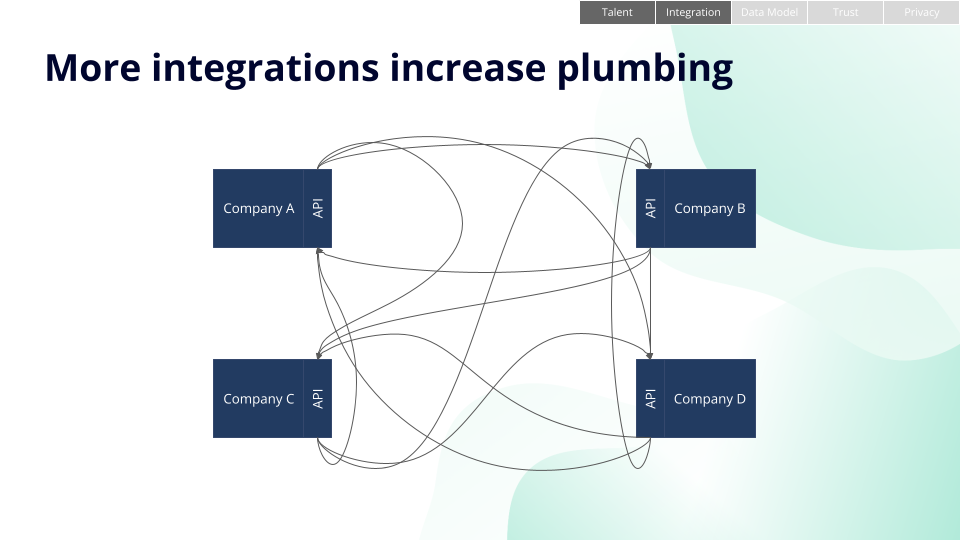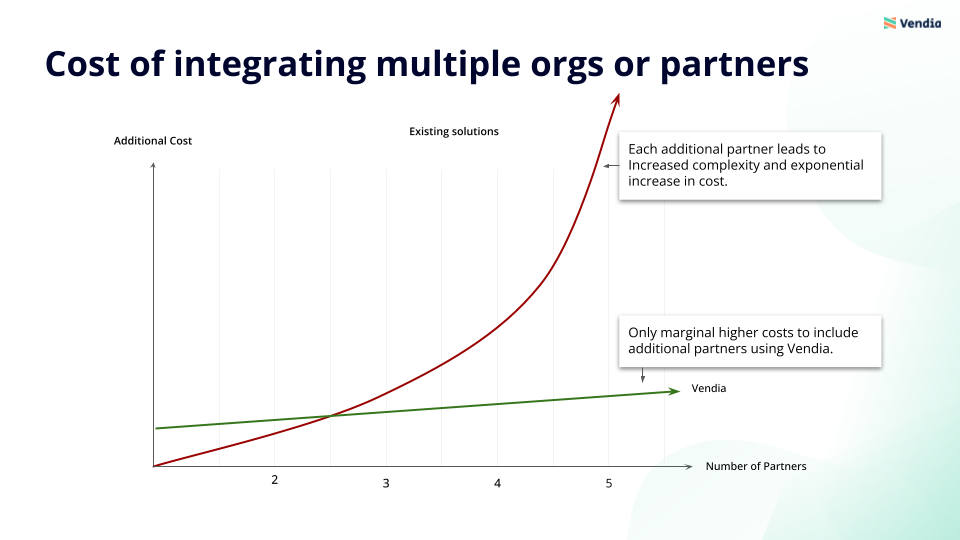Thanks to Rebecca Lammers, Director at Slalom and one of only 200 Salesforce MVPs in the world, and James Gimourginas, Director of Solutions Architecture and Customer Success at Vendia for hosting our webcast, The future of CRM data sharing. Here are four key highlights:
1. There are many benefits of combining CRMs in real time
There is a good reason why companies take on the arduous task of combining multiple CRMs. Rebecca highlighted benefits like the ability to:
- Accelerate co-selling opportunities and sales cycles
- Quickly leverage access to customers in a recently acquired company
- Unlock new insights across organizations, such as more complete customer insights
- Always having access to the latest data
2. CRM data sharing between multiple CRMs is a nightmare
There are many benefits to combining multiple CRMs, but there are also barriers and limitations with existing solutions. Rebecca outlined her “nightmares” when bringing multiple CRM organizations into one reliable and trusted data view.
- With Salesforce and CRM talent in short supply, integrations prove increasingly more difficult to implement.
- Have you ever started mapping data across organizations? If so, you know how this can be a never-ending task.
- Designing integration solutions is based on the here and now. As soon as you have integrated a solution, things start to change. Adapting to new requirements can be difficult and complex.
- The most important aspect of a CRM is trust in the data. If users don’t trust they are looking at the correct and latest data, usage and adoption will go down.
- New data privacy requirements are launched constantly and need to be managed at a country or even state level. To ensure compliance, you add another layer of complexity all CRM owners need to take seriously.

3. What is the root cause of these nightmares?
The main reason integrating multiple CRMs is so difficult comes down to API limitations. Data is shared through APIs that serve no other function than piping data from A to B at certain intervals. The APIs don’t know what the data means and even if it conflicts with existing data—it just transports it. Furthermore, every data sharing connection requires its own API, leading to a criss-cross of API piping that is complex to design, build, and maintain. The result? Your data is out of date and out of sync.

4. There’s a new approach that will reshape the industry
James presented the Vendia Share platform which allows you to connect (virtually) an unlimited number of partners without adding complexity or additional cost to the development and maintenance of the solution. This is down to the fact that Vendia takes a Hub and Spoke approach, where every connection goes through the hub. Vendia intelligently evaluates and resolves any data conflicts in the hub and manages the data access restrictions between partners. This allows for data sharing in real time, across many partners, delivered in a scalable and zero maintenance environment.

The Vendia CRM solution removes the nightmares that you would normally have to deal with. No dependency on added Salesforce staffing for integration projects, the universal data model allows for easy onboarding of new partners and the sharing of any kind of data, Data privacy is managed and easily controlled, no exponential cost with additional partners, and finally, data that is synced and shared in real time leading to a trusted source that accelerates your sales teams.
See the solution for yourself
Get all the details and insights when you watch the webcast or contact us to request more information
